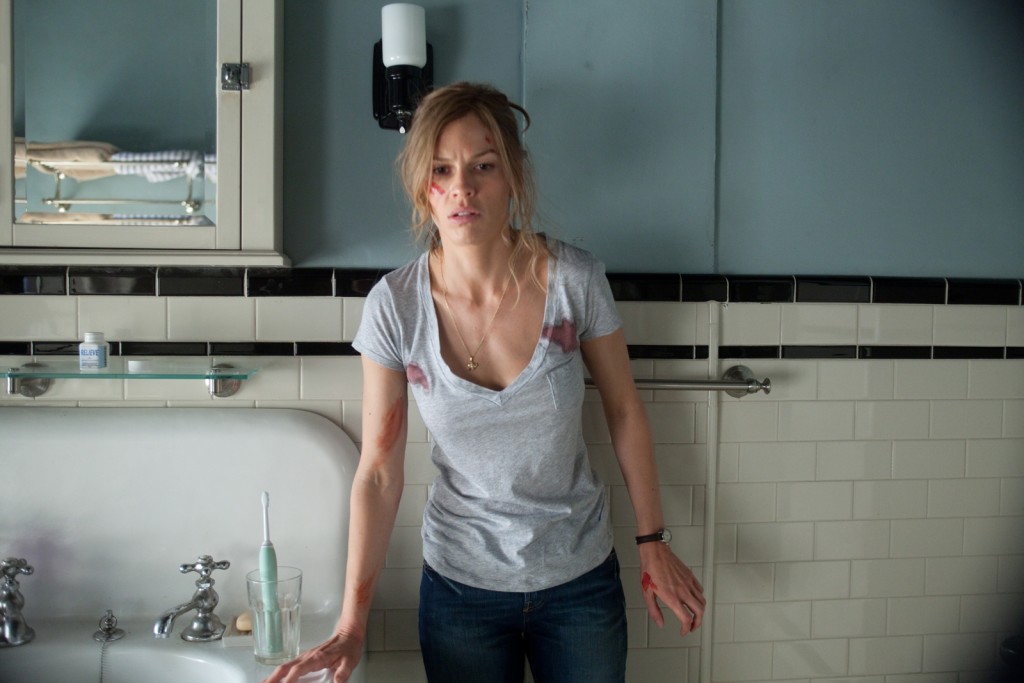Genre: Horror
Premise: A mother and her two young daughters enjoy a vacation at their remote lake house until they realize they’re being watched.
About: This script finished number 5 on last year’s Blood List, the list of the best horror specs of the year. It was written by up-and-coming scribe, Mike Scannell, a UTA client who managed to sell his script to Screen Gems. The film will be produced by “The Strangers” writer-director, Bryan Bertino.
Writer: Mike Scannell
Details: 103 pages
Paula Cole hit it big with her song, “Where Have All The Cowboys Gone?”
I feel the same way about scripts, Paula. Where have all the big ideas gone?
The Sixth Sense
The Matrix
Inception
The Ring
Edwin A. Salt
Cloverfield
Saw
Amidst the YA adaptation revolution, the studio “Universe” approach, and the town’s unofficial plan to biopickize every human being who’s ever done something remotely interesting (When are we getting a biopic about Nikola Tesla’s personal chef?), writers seem to have forgotten what an “idea” is. Even big-concept man, Christopher Nolan, is getting confused. Inception was a rad idea about dream-heists. Interstellar is about…going into space and ending up in a book store?
People. Hollywood was built off of ideas. Big ideas. But because everyone in town has spent the last seven years focusing on re-packaging old ideas, they don’t know how an idea works anymore. An idea is something with a hook, something that contains that classic “What if?” scenario. What if we were all living in a computer generated reality and didn’t know it?
“Scarecrow” seems content with creating a situation rather an idea. A mom and her kids are stalked by a crazy man at their lake house. Which is fine. Lots of movies have been made with the exact same approach. But those movies never make it past VOD. If you want a movie that’s going to play in theaters, you need to come up with a BIG IDEA. Especially these days, when fewer movies are getting screen time and more movies are being pushed straight to digital.
Anyway, Scarecrow follows 30 year-old Laura Burke and her two daughters, 6 year-old Kayla and 4 year-old Maddie, as they prepare to drive up to their lake house. There’s some drama though. Papa Burke, Shawn, has to get some work done and won’t be coming up until later, which throws the schedule off. Laura isn’t happy.
But she takes the girls up anyway, and, once there, forgets about it. They have a beautiful house overlooking the lake. Nobody else around to bother them. It’s the perfect vacation.
That is until Kayla and Maddie wander into the woods and find an Alice In Wonderland like table set up in the middle of a clearing, with two giant cupcakes waiting to be eaten. Maddie decides to chow down, while Kayla saves hers for when Daddy shows up.
This leads to Maddie getting sick and throwing up the cupcake, which cues mom in on their find. Naturally, she isn’t thrilled that a mysterious cupcake lunch has been set up on her private property. That almost always leads to something bad.
And then the noises begin. In the woods. On the roof. Even the family dog disappears.
It doesn’t take everyone long to discover that a CRAZYFUCKINGLUNATIC is stalking them, and if they don’t escape, spewing out cupcake filling is going to be the least of their worries. As they pray that dad shows up in time to take this guy down, they try numerous ways to escape. But King Cupcake has already thought of everything. And the later it gets, the more it looks like he’s going to make them his icing.
Okay so I’ve established that I don’t think this idea is big enough. But as far as the situation goes, it works. And that’s because it’s an established setup. A group of people we like are stuck in danger, being hunted by something, and they must find a way out. That kind of scenario writes itself.
With that said, one of the most common mistakes made in this kind of movie is repetition. When characters are stuck in one area for too long, unless you’re on your game as a writer, you start repeating plot beats. And if you repeat too much, the audience catches on and tunes out.
That’s what happened here. There were way too many times where we heard this conversation (paraphrasing): “Okay, girls, we need to run outside.” “I don’t want to, mommy. I’m scared.” I must’ve read that at least 20 times.
The question is: How did the script find itself in this predicament?
Well, Scarecrow lacks character exploration, both on an individual and relationship level. If your characters aren’t trying to overcome a flaw within themselves or fix a relationship with another character, then you eliminate a major source of variation in your story.
For that reason, after your characters try to escape the house but fail, and you’re attempting to come up with the next sequence, you don’t have that character variant to turn to. This forces you to go right back to plot. And what do you have in terms of plot with a story like this? To get out of the house! That’s it.
That’s the only story you have to tell because that’s the situation the movie is based around. So of course if we try to get out of the house and fail and then we go right back to that same plot beat, it’s going to feel repetitive.
Contrast this with a movie like The Babadook. In that film, there was a MAJOR relationship issue that needed to be resolved in the story. The mother had grown resentful of her special-needs child for destroying her life, for not allowing her to experience anything other than taking care of him. This gave the story much more to work with, so in between the scary plot beats, we could explore that relationship.
There’s also another route you can go here and that’s the “It Follows” route. It Follows wasn’t a traditional character-exploration piece. But what the film lacked on the character front, it made up for on the puzzle front. The unique concept made you think (You’re wondering, when you start seeing old people show up as the followers, who’s been having sex with who in this town, and under what horrifying circumstances).
Scarecrow doesn’t have any of that. There’s no character exploration (except for some bare-bones flashbacks) and no puzzle. And what you’re left with is a very straightforward plot with a few treats (the paper mache tea party was pretty freaky). And look, straightforward can work. “Taken” is one of the most straightforward movies there is. But straightforward will also only get your movie so far.
If you really want to get this town excited, give them a big idea. It’s a great time to do it too. They haven’t seen one in awhile.
[ ] what the hell did I just read?
[x] wasn’t for me
[ ] worth the read
[ ] impressive
[ ] genius
What I learned: In horror movies, you want to add as many elements of urgency as you can. A basic ticking time bomb or killer chasing the protagonists is great. Either of those will bring an overall sense of urgency to your story. But you can always add more. I like how Scannell had Maddie struggling to breathe after eating the cupcake. It was one more reason that they had to hurry (to get her to a hospital). But remember, you can always add more. For example, we could’ve had, early on (maybe while getting gas on a rural road outside the cottage), that the gas station closed at 9. The owner tells them, “If you need anything, I’m here til 9 every night.” You can then use that 9 o’clock deadline to give the story one more ticking time bomb. One of their goals is to get to that gas station before it closes. Get creative. There really is no limit on how many “urgency enhancers” you can add.



